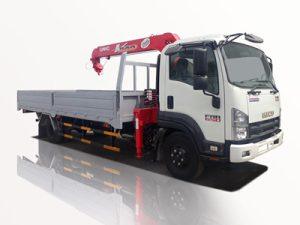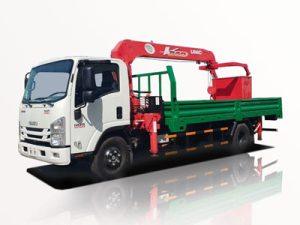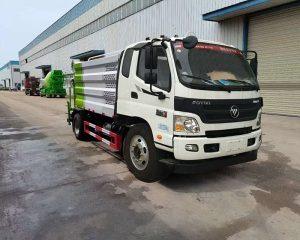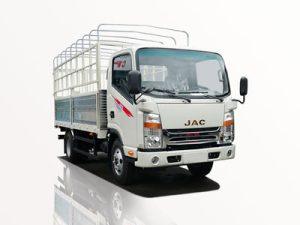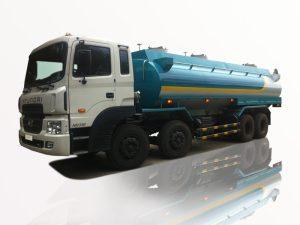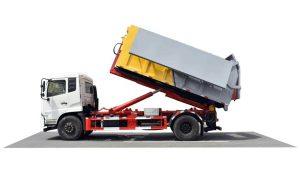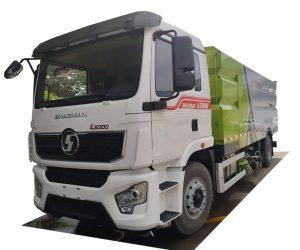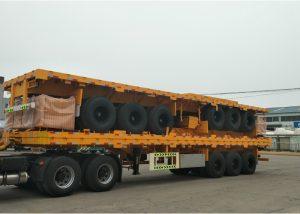Monday to Saturday - 8:00 -17:30
What is a Grapple Truck? Understanding Its Functionality and Benefits
Introduction
A grapple truck is a specialized vehicle designed primarily for the collection and transport of waste, debris, and large items. These trucks are often equipped with a hydraulic arm and grapple attachment that allows operators to lift and move heavy materials with ease. Grapple trucks are widely used in construction, landscaping, and municipal services, playing a crucial role in maintaining cleanliness and efficiency in urban environments. In this article, we will explore the various aspects of grapple trucks, including their components, uses, benefits, and tips for operating them safely. We’ll also address some frequently asked questions to provide a comprehensive understanding of this essential piece of equipment.
Table of Contents
- What is a Grapple Truck?
- Components of a Grapple Truck
- Common Uses of Grapple Trucks
- Types of Grapple Trucks
- Benefits of Using Grapple Trucks
- Operating Tips for Grapple Trucks
- Maintenance of Grapple Trucks
- Cost of Grapple Trucks
- Frequently Asked Questions
What is a Grapple Truck?
A grapple truck is a vehicle that incorporates a hydraulic arm with a grapple attachment, designed to lift and carry large or bulky items. These trucks offer a unique solution to waste management, especially in situations where traditional garbage trucks fall short. Grapple trucks often come with an open or flatbed configuration, allowing for a larger capacity for various materials such as tree limbs, construction debris, and other heavy refuse.
Components of a Grapple Truck
Understanding the components of a grapple truck is essential for effective operation and maintenance. Here are the primary parts:
- Chassis: The base structure of the truck that supports all other components.
- Hydraulic System: Powers the grapple’s movement and allows for lifting heavy loads.
- Grapple Attachment: The claw-like feature that grips and secures materials for transport.
- Bed/Container: The area where collected materials are stored before being disposed of.
- Controls: The user interface for operating the hydraulic system and grapple.
Hydraulic System
The hydraulic system is critical to a grapple truck’s functionality. It allows the operator to maneuver the grapple with precision, lifting, rotating, and lowering it as needed. Understanding how to operate this system safely is vital for preventing accidents and ensuring efficient work.
Grapple Attachment
Grapple attachments come in various designs, including clamshell and shovel styles, depending on the type of materials being collected. Choosing the right attachment enhances the truck’s versatility and performance.
Common Uses of Grapple Trucks
Grapple trucks serve several vital functions in different industries:
- Debris Removal: Ideal for clearing large amounts of debris after storms or construction projects.
- Landscaping: Used by landscapers to clear tree limbs, stumps, and other landscaping waste.
- Waste Management: Municipal services utilize grapple trucks for collecting bulky items, such as furniture and appliances.
- Recycling: Effective in handling recyclable materials like yard waste, brush, and metals.
Practical Example: Storm Cleanup
After a severe storm, grapple trucks offer municipalities a quick and efficient approach to remove fallen trees and damaged structures, ensuring public safety and restoring normalcy.
Types of Grapple Trucks
There are several types of grapple trucks designed for specific tasks. Understanding these can help in selecting the right equipment for your needs:
- Standard Grapple Trucks: Typically used for general waste and debris collection.
- Knuckle Boom Trucks: Feature a flexible arm that enhances maneuverability and reach.
- Track Grapple Trucks: Equipped with tracks instead of wheels, ideal for rough terrain and heavy loads.
Comparison Table of Grapple Trucks
| Type of Grapple Truck | Best For | Advantages |
|---|---|---|
| Standard Grapple Truck | General waste collection | Cost-effective, versatile |
| Knuckle Boom Truck | Restricted areas | Superior reach, flexibility |
| Track Grapple Truck | Rough terrains | Stability, heavy lifting |
Benefits of Using Grapple Trucks
The adoption of grapple trucks in waste management and construction comes with numerous advantages:
- Efficiency: Grapple trucks can collect and transport large volumes of waste quickly, reducing the time needed for cleanup.
- Safety: Operators can remain in the truck cab, minimizing exposure to hazardous conditions on the ground.
- Versatility: Capable of handling various materials, from yard waste to construction debris.
- Cost-Effective: Reduces labor costs as fewer employees are needed for manual handling of materials.
Practical Tip: Hiring vs. Purchasing
Consider your project’s scale when deciding whether to hire or purchase a grapple truck. For one-off jobs, hiring may be more economical, while consistent use justifies ownership.
Operating Tips for Grapple Trucks
To maximize safety and effectiveness while operating a grapple truck, consider the following tips:
- Training: Ensure operators receive thorough training on the hydraulic system and safety protocols.
- Inspection: Conduct daily inspections of the truck, especially the hydraulic system and grapple attachment.
- Load Management: Be mindful of weight limits to prevent accidents and equipment damage.
- Clear Communication: Maintain clear signals and communication among crew members during operations.
Maintenance of Grapple Trucks
Regular maintenance ensures that grapple trucks operate efficiently and safely. Here are some essential maintenance practices:
- Hydraulic Fluid Checks: Regularly check and refill hydraulic fluid as needed.
- Grapple Inspection: Examine the grapple attachment for signs of wear or damage and replace as necessary.
- Brake and Tire Checks: Inspect brakes and tires regularly to ensure safe operation.
- Electrical System Maintenance: Ensure the electrical system functions correctly to support all truck operations.
Cost of Grapple Trucks
The cost of grapple trucks can vary significantly based on several factors, including size, manufacturer, and features. Here’s a breakdown:
| Type of Truck | Price Range |
|---|---|
| Used Standard Grapple Truck | $30,000 – $80,000 |
| New Standard Grapple Truck | $80,000 – $150,000 |
| Knuckle Boom Truck | $120,000 – $200,000 |
| Track Grapple Truck | $100,000 – $250,000 |
Frequently Asked Questions
What materials can a grapple truck collect?
A grapple truck can collect a wide range of materials, including yard waste, debris from construction projects, tree limbs, stumps, and large appliances.
Are there special licenses required to operate a grapple truck?
Yes, operators typically need a commercial driver’s license (CDL) and may be required to complete specific training programs for operating hydraulic equipment safely.
How often should maintenance be performed on a grapple truck?
Daily inspections should be conducted, while more thorough maintenance checks should occur at regular intervals, such as monthly or quarterly, depending on usage.
Can grapple trucks operate in all weather conditions?
While grapple trucks can operate in various weather conditions, caution is advised in extreme weather, such as heavy rain or snow, due to potential safety hazards.
What is the typical lifespan of a grapple truck?
The lifespan of a grapple truck can vary significantly, but with proper maintenance, these trucks can last over 10-15 years depending on usage and environmental conditions.


